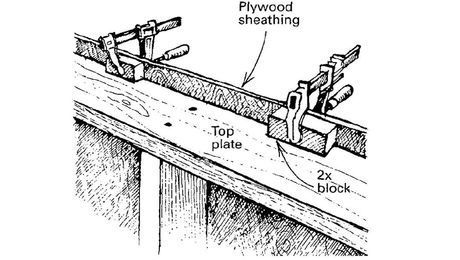Q:
I’m planning to build raised-panel doors for the cabinets in my lakeside home in South Carolina. I’m worried about what the humidity and temperature changes might do to the miter joints in the frames as well as to the panels. What would be the best way to control moisture movement in the joints, and would it help to join the miters with biscuits and epoxy?
Richard S. Tyrell, Prosperity, SC
A:
Michael Standish, a carpenter in Jamaica Plain, Massachusetts, replies: If the raised-panel doors you plan to build are to be stained or left with a natural finish, I assume that you are building them out of lumber from a tree (as opposed to man-made materials). In this case, you are quite correct to worry about movement from the inevitable seasonal changes in temperature and humidity. However, there are several strategies you can follow to keep your project intact.
First, choose a species of wood that expands and contracts little and remains fairly stable when it does move. Mahogany, which also takes glue and finishes well, is an excellent choice. Bear in mind that regardless of what wood you choose, vertical-grain stock will swell or shrink only half as much as flat sawn.
The best door design to accommodate wood movement is frame and panel, but the best way to build a frame-and-panel door is not with miter joints. The natural tendency of a miter joint is to open at the outside of the miter as the wood swells in the dampness of summer. As the wood shrinks in the winter, the inside of the miter opens up. However, if your heart is set on miter-jointed doors, careful selection of species and grain orientation can lessen this effect. Reducing the stiles and rails to the narrowest workable width also minimizes miter-joint movement. In many cases biscuit joinery can make miter joints even stronger. However, butt joints reinforced with splines, biscuits or stub tenons, or joints produced by a cope-and-stick router-bit set (see Making Cabinet Doors with Router Bits) are stronger and more stable than miters.
Meanwhile, the panel for your door has to be dimensioned properly to avoid either blowing the frame apart when the panel swells or having a gap show up between the frame and the edge of the panel when it shrinks. Under the best circumstances (say, if you’re using vertical-grain mahogany), you would still need to allow for at least 1/4 in. of movement in a panel that is 18 in. wide. If the groove in the frame that holds the panel is only 1/4 in. deep, you can see how easily an ugly gap can develop.
A moisture meter would be handy in this situation, as would R. Bruce Hoadley’s book Understanding Wood, which contains a comprehensive discussion of frame-and-panel construction in the context of wood movement. Hoadley also includes a formula for calculating the correct panel dimension, depending on species, grain orientation and moisture content of the wood. You’d be smart to prefinish the panel to avoid an unwanted wintertime accent stripe from the unfinished edges of the panel being exposed as it shrinks away from the frame. Prefinishing also helps to prevent accidentally gluing the panel to the frame with your finish. Finally, I’d recommend pinning the panel in the center of each rail (assuming the panel’s grain runs up and down) so that the shrinkage is divided evenly from side to side.
If the doors you’re building are to be painted, most of the problems involved in solid-lumber construction can be circumvented by using medium-density fiberboard (for more on MDF, see Traditional Cabinetry from a Modern Material). The shrinkage rate for MDF is typically well under 1% as opposed to a range of roughly 5% to 10% for wood. MDF also machines beautifully and takes paint well, but there are a couple of things you should watch out for.
Many of the adhesives used to manufacture man-made building materials such as MDF attack the binder in carbidecutting tips. So if you do a lot of work with this stuff, you can expect to have prematurely dull router bits and sawblades. And because MDF can be utterly ruined by excess exposure to water, you may want to investigate one of the relatively new exterior grades of MDF offered by most manufacturers.
As far as gluing your doors, epoxy is probably more than you need, and you might even be introducing new problems if your brand of epoxy has a critical ratio of hardener to resin. I’ve had good luck with emulsion polymer isocyanate (one-part polyurethane glues) for MDF projects, but I’d recommend that you take a long lunch one day and glue up some test joints from scrap just to be sure.

























